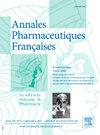将风险分析应用于医院药剂科的医疗器械管理过程。
IF 1
Q4 PHARMACOLOGY & PHARMACY
引用次数: 0
摘要
导言:在 COVID-19 大流行期间,一次性使用医疗器械(SUMD)的供应出现了反复和不可预见的中断。本研究旨在根据失效模式、影响和关键性分析(FMECA)方法,确定本医疗中心医院医疗器械管理流程的相关风险:方法:招募合格的医护人员组成多学科共识委员会。通过分析流程图,在头脑风暴会议上确定了所有失效模式、原因和后果。然后,根据频率、严重程度和可探测性三个参数计算出的关键性指数(CI)对它们进行分类。将 CI 的平均值和中位值作为界限,对其进行优先排序。然后提出了纠正和预防措施:结果:共确定了 49 种故障模式,累计 4466 个关键点。最关键的步骤是与工厂间订单有关的步骤,其临界点为 783 点。制定的行动计划使我们能够控制与流程相关的风险中 64% 的总体临界点。我们提出了三条行动主线:持续培训,尤其是管理和行政任务方面的培训;后勤改进(结构重组和实施系统,以确保 SUMDs 的线路安全);以及支持医院药房的数字化:FMECA 是一种协商一致的方法,可以提出行动建议,以降低与医疗设备管理过程相关的风险。优化需求评估、加强与利益相关者的沟通以及确保电路安全,对于保证医疗设备的可用性以造福患者至关重要。本文章由计算机程序翻译,如有差异,请以英文原文为准。
Risk analysis applied to the process of managing medical single use devices in a hospital pharmacy department
Introduction
During the COVID-19 pandemic, single use medical devices’ supply (SUMD) was marked by repetitive and unforeseen interruptions. The present study aimed to determine the risks related to the processes of management of medical devices in our CHU according to a method of failure mode, effect and criticality analysis (FMECA).
Methods
Qualified healthcare professionals were recruited to form a multidisciplinary consensus committee. By analyzing the process map, all failure modes, causes and consequences were identified through brainstorming meetings. They were then classified taking into account the criticality index (CI) calculated according to three parameters: frequency, severity, and detectability. The prioritization was carried out by considering the mean and the median values of the CI as limits. Corrective and preventive actions were then proposed.
Results
A total of 49 failure modes were identified, accumulating 4466 criticality points. The most critical step is that relating to the inter-depot order with a CI equal to 783 points. An action plan was developed, allows us to control 64% of the overall criticality of the risks linked to the process. Three main lines of action have been proposed: continuous training, especially for managerial and administrative tasks, logistical improvement (architectural reorganization and implementation of systems for securing the circuit of SUMDs) and support for the digitization of hospital pharmacy.
Conclusion
The FMECA is a consensual method, which makes it possible to propose actions in order to reduce the risks linked to the process of managing medical devices. Optimizing the estimation of needs, strengthening communication with stakeholders and securing the circuit are essential to guarantee the availability of SUMDs for the benefit of the patient.
Introduction
Lors de la pandémie de COVID-19, l’apprivoisement en dispositifs médicaux (DM) a été marqué par des interruptions répétitives et imprévues. La présente étude visait à déterminer les risques liés aux processus de gestion des DM dans notre CHU selon une méthode d’analyse des modes de défaillance et de leurs effets (AMDEC).
Méthodes
Des professionnels de la santé qualifiés ont été recrutés pour former une équipe d’étude multidisciplinaire. Après la rédaction de la cartographie du processus, les modes de défaillance ont été définis tout en indiquant les causes et conséquences à travers des réunions de brainstorming. Ensuite, ils ont été classés en tenant compte de l’indice de criticité (IC) calculé selon trois paramètres : la fréquence, la sévérité, et la détectabilité. La priorisation a été réalisée en considérant la moyenne et les valeurs médianes de l’IC comme limites. Des actions correctives et préventives ont alors été proposées.
Résultats
Un total de 49 modes de défaillance a été identifié cumulant 4466 points de criticité. L’étape la plus critique est celle relative à la commande inter-dépôt avec un IC égal à 783 points. Le plan d’action pour remédier aux risques jugés comme inacceptables, nous permet de maîtriser 64 % de la criticité globale des risques liés au processus. Trois grands axes d’actions ont été proposés : formation continue surtout pour les tâches managériales et administratives, amélioration logistique (réorganisation architecturale et mise en place de systèmes pour la sécurisation du circuit des DM) et soutien à la numérisation de la pharmacie hospitalière.
Conclusion
L’AMDEC est une méthode consensuelle qui permet de proposer des actions afin de réduire les risques liés au processus de gestion des DM. Elle permet notamment l’optimisation de l’estimation des besoins, le renforcement de la communication avec les parties prenantes.
求助全文
通过发布文献求助,成功后即可免费获取论文全文。
去求助
来源期刊

Annales pharmaceutiques francaises
PHARMACOLOGY & PHARMACY-
CiteScore
1.70
自引率
7.70%
发文量
98
期刊介绍:
This journal proposes a scientific information validated and indexed to be informed about the last research works in all the domains interesting the pharmacy. The original works, general reviews, the focusing, the brief notes, subjected by the best academics and the professionals, propose a synthetic approach of the last progress accomplished in the concerned sectors. The thematic Sessions and the – life of the Academy – resume the communications which, presented in front of the national Academy of pharmacy, are in the heart of the current events.
 求助内容:
求助内容: 应助结果提醒方式:
应助结果提醒方式:


